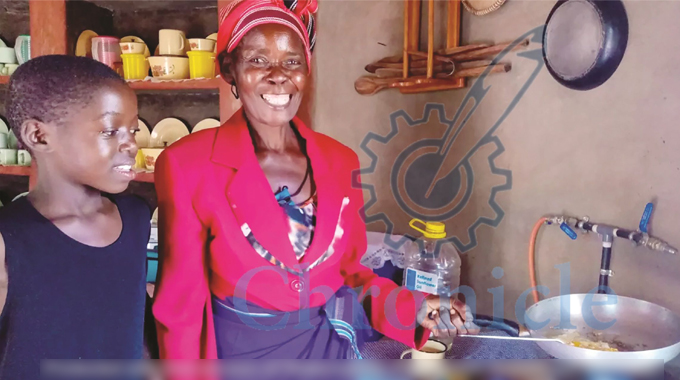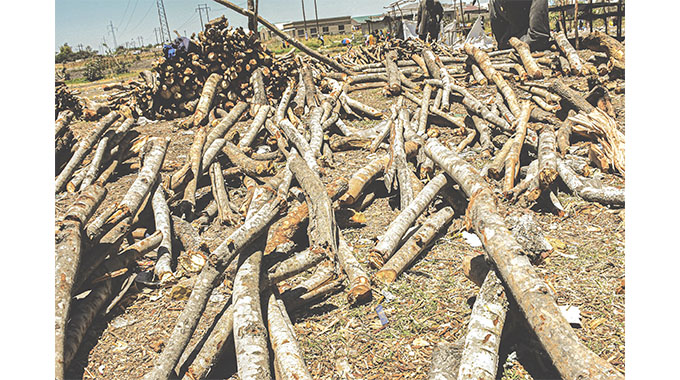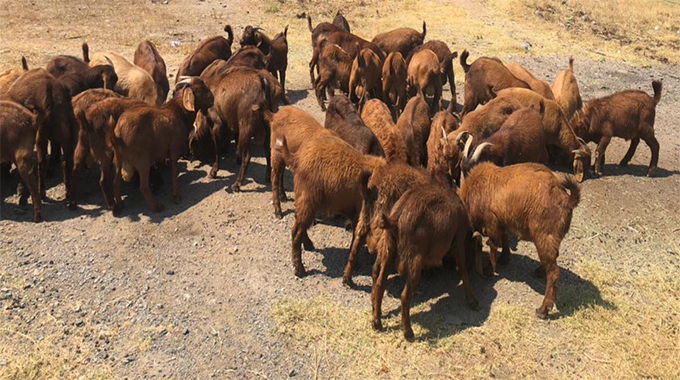Zimbabwe: Saving time while saving the environment

Deforestation in Zimbabwe continues to spread at a high rate due to the over reliance on firewood in the rural areas. Indicators attribute this to be a key factor in some of the extreme weather change patterns that have affected several parts of the country.
Climate change-induced drought has been traced in the southern parts of Zimbabwe like Mwenezi where people are inevitably forced to rely on wood for both cooking and selling to earn an income.
This has several negative impacts not only on the environment but also on the health and safety of women and girls.
The time-consuming responsibility of fetching firewood is assigned to girls leaving them vulnerable to abuse and at a disadvantage when it comes to studying as they have less time. Indoor pollution from open fires exposes women and children to smoke and soot leading to respiratory diseases.
Use of wood as a source of energy is deeply ingrained in the community. For Sister Hlongwani a 61-year-old woman who lives with her family of nine in Neshuro Village, Mwenezi District, wood has been their lifeblood for several generations. She, at the same time, has seen the grazing lands and forests diminishing through the years. “For several years, firewood has been the source of energy we could afford because of its convenience and easy access,” said Hlongwani.
CARE International in Zimbabwe, Plan International, and ICRISAT working with the community in Neshuro, through the Zimbabwe Resilience Building Fund- Enhancing Community Resilience and Sustainability (ECRAS) project, set about to establish an alternative and reusable source of energy, a biodigester.
The biodigester is a fixed dome with an airtight underground tank in which organic materials mixed with water are digested with water through anaerobic bacterial action to generate biogas fuel. Biogas is a gas produced by the biological breakdown of organic matter by bacteria in the absence of oxygen (anaerobic process), and therefore it is a product of anaerobic digestion or fermentation of biodegradable materials.

Anaerobic bacterial-Image taken from Shutterstock
The main source of feed for the fixed dome biodigesters is cow dung.
The biogas slurry which is produced as waste is an effective fertilizer substitute that benefits the farmer through the replacement of chemical fertilisers. The family is now saving an average of three hours per day which they normally spent looking for the traditional sources of cooking energy.
Hlongwani’s home was one of the model households supported with materials such as cement and piping to construct a cubic biogas digester. This has brought transformation in the community as Hlongwani explained, “Now, our lives have improved since we started using biogas.”

cows
One biogas digester can cater for a family of 12 per day, hence two households can prepare three meals a day on the system.
For fuel for the digester, the community was trained in livestock management. A household uses readily available water and fresh cow dung from their kraal as fuel for the biogas digester.
The gas is ready after seven days. The remaining slurry from the system can be used as a high-value environmentally friendly fertilizer which can be used for the nutrition garden. The community also received knowledge to enable them to generate income and thus improve their lives. These lessons included farming small grain and legume production, and income generation through Mukando – village savings and lending (VSAL) schemes which Hlongwani was already participating in.

firewood
“The biogas is changing our lives. We learned about Mukando and I have managed to buy goats, chickens, and kitchen utensils. This year we managed to plant round nuts, ground nuts, sweet potatoes, millet, sorghum, velvet beans, and maize. We also continue to grow our cattle head of 19. Not only for the dung for the gas but also to help us to pay school fees when we fail to sell the grain,” happily said Hlongwani.
She is one of 49 859 participants in the project. The impact was especially felt during the pandemic as they were still able to not only generate food but also sell and make money. Also, the clean energy production technology contributes to reduced dependency on firewood, as well as saving time that used to be spent by girls and women looking for firewood reducing risks of abuse.

Goats
“My grandchildren no longer have to fetch firewood before going to school, they simply boil water and cook their food on the biogas stove and pack it into their lunch boxes. They are so happy because they now have more time to focus on school and their morning chores have declined.
“This also means they will not get to school tired or late and they have more time to read.
I am now planning to connect the gas to have lights in the house so that they can read more and do well in school,” said Hlongwani as she smiles freely.
The use of biogas is contributing to off-setting of greenhouse emissions associated with livestock production by reducing the burning of firewood and fossil fuels.
A family of five needs a daily average of 7.5 kilograms of firewood to cook. This means that through this technology per year a total of 5 490 kilograms of forestry has been preserved. Given that one kilogram of methane is used, this leads to a 21-kilogram reduction of carbon dioxide emitted. In total, the use of biogas has prevented an estimated 22 689 072 kg of carbon dioxide from being emitted into the atmosphere. Thus, in the long term, this also helps to reduce climate change.
CARE Zimbabwe Assistant Country Director Nyaradzo Chahuruva said, “CARE is working with partners and donors such as the ZRBF to create smart and valuable climate-friendly and clean air energy solutions.
As an alternative to cutting down trees and burning polluting wood, dung, or fossil fuels for household energy, biogas could help slow down climate change and improve global health. We believe investments in biogas technology in remote areas can reduce pollution and save millions of lives.” – CARE Zimbabwe.











Comments